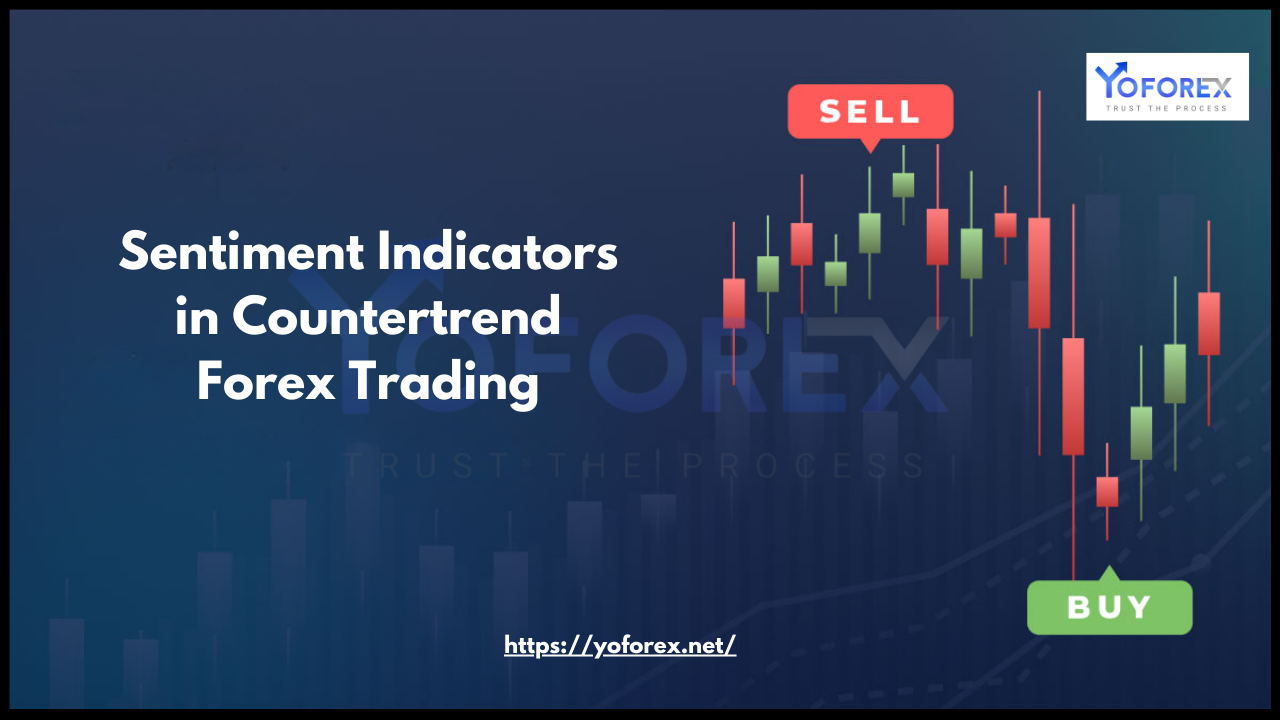Forex trading is a complex and dynamic market where traders employ various strategies to gain an edge. One of the most intriguing approaches is countertrend trading—going against the prevailing market trend to capture reversals and corrections. While technical analysis and fundamental factors play crucial roles, sentiment indicators can offer valuable insights into market psychology. This blog explores the role of sentiment indicators in countertrend forex trading, how they work, and how traders can use them effectively.
What Are Sentiment Indicators?
Sentiment indicators are tools that measure the collective emotions, opinions, and positions of traders in the forex market. These indicators provide insights into whether traders are predominantly bullish or bearish on a currency pair. Unlike technical indicators that rely on price and volume, sentiment indicators focus on market participants’ positioning and psychological behavior.
Types of Sentiment Indicators
There are several types of sentiment indicators used in forex trading:
- Commitment of Traders (COT) Report – Published by the Commodity Futures Trading Commission (CFTC), this report provides data on positions held by large traders, hedgers, and small speculators.
- Retail Sentiment Indicators – These indicators, such as the IG Client Sentiment Index, track the positions of retail traders.
- Options Market Sentiment – Examines put/call ratios and open interest in currency options markets.
- Volatility Index (VIX) – Often called the “fear gauge,” the VIX measures market volatility and investor sentiment.
- Forex Open Interest Data – Derived from futures contracts, it indicates the number of open positions in the market.
- Social Media and News Sentiment Analysis – Uses AI-driven tools to analyze sentiment from social media, financial news, and forex forums.
Understanding Countertrend Trading
Countertrend trading involves taking positions against the current market direction, anticipating a reversal or correction. This strategy is based on the principle that trends tend to exhaust themselves, leading to price retracements. Traders look for overextended price movements, divergence in indicators, and sentiment extremes to identify potential turning points.

Why Use Sentiment Indicators in Countertrend Trading?
Sentiment indicators help traders identify extreme market conditions where a reversal is likely. When a majority of traders are overly bullish or bearish, it often signals that the trend is reaching exhaustion. Countertrend traders use sentiment indicators to gauge market psychology and find high-probability reversal setups.
How to Use Sentiment Indicators for Countertrend Trading
1. Identifying Extreme Market Sentiment
One of the most effective ways to use sentiment indicators in countertrend trading is to look for extreme bullish or bearish sentiment. When a majority of traders are positioned on one side of the market, it increases the probability of a reversal. For example:
- If 80% of retail traders are long on EUR/USD, it may indicate that the uptrend is overstretched, and a correction is imminent.
- If the COT report shows that commercial hedgers are taking opposite positions against speculators, a reversal might be near.
2. Confirming Reversal Signals with Technical Analysis
Sentiment indicators should not be used in isolation. Combining them with technical analysis enhances the accuracy of countertrend setups. Some common confirmation tools include:
- Divergence in RSI or MACD – If sentiment is excessively bullish but RSI shows bearish divergence, it strengthens the case for a reversal.
- Support and Resistance Levels – Extreme sentiment near key resistance or support levels can be a strong countertrend signal.
- Candlestick Patterns – Reversal patterns like Doji, Engulfing, or Hammer near extreme sentiment zones provide additional confirmation.
3. Using Sentiment Divergence
Sentiment divergence occurs when price moves in one direction while sentiment shifts in the opposite direction. This is a powerful signal that the trend may soon reverse. For example:
- If price continues to rise, but fewer traders are buying (sentiment becomes less bullish), it could indicate weakening momentum and a potential downtrend reversal.
4. Timing Entries and Exits
Sentiment indicators can help traders time their entries and exits more effectively. Instead of entering a countertrend trade too early, traders can wait for sentiment to reach extreme levels and confirm with other indicators before placing a trade.
5. Managing Risk in Countertrend Trades
Since countertrend trading goes against the prevailing trend, risk management is crucial. Traders should:
- Use tight stop-loss orders to limit potential losses.
- Avoid countertrend trades during strong fundamental events (e.g., central bank decisions, economic data releases).
- Take partial profits at key levels to minimize risk exposure.
Real-World Examples
Example 1: EUR/USD Countertrend Trade Using Sentiment Data
- Scenario: Retail traders are overwhelmingly long on EUR/USD (85% long, 15% short).
- Analysis: The uptrend is extended, and price approaches a major resistance level.
- Technical Confirmation: Bearish divergence appears on the RSI, and a bearish engulfing candlestick forms.
- Trade Setup: A short position is initiated with a stop-loss above resistance and a target near the next support level.
- Outcome: Price reverses, confirming the countertrend strategy, and the trade profits from the decline.
Example 2: GBP/JPY Sentiment Divergence
- Scenario: GBP/JPY is in a strong uptrend, but sentiment starts shifting bearish (more traders shorting while price rises).
- Analysis: Market sentiment divergence suggests weakening bullish momentum.
- Technical Confirmation: MACD shows bearish divergence, and volume starts declining.
- Trade Setup: A short position is taken when price breaks below a key trendline.
- Outcome: The market reverses, leading to a profitable countertrend trade.
Conclusion
Sentiment indicators are valuable tools for countertrend forex trading, providing insights into market psychology and helping traders identify potential reversal points. By combining sentiment analysis with technical indicators and sound risk management, traders can enhance their countertrend strategies and improve their chances of success.

